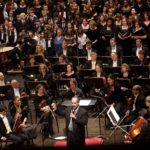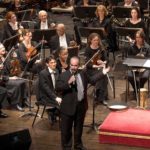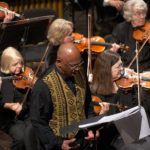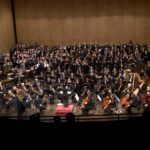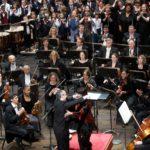— Battle Creek Enquirer
Instrumentation
narrator, children’s chorus, mixed chorus
2(II=picc).2.2.2—4.3.3.1—timp.perc(4).optional addtl perc—harp—pft—strings
Text
Traditional Native American, Langston Hughes, John F. Kennedy, Mahatma Gandhi, Walt Whitman, et al.
Movements
I. Prelude, Invocation and Dance
II. Voices of Unity
III. “I Dream a World”
IV. “The Great Drum” (optional movement)
V. Finale
Duration
21:00
Composition Date and Commission
Composed 2006-2007
Commissioned by the Battle Creek Symphony Orchestra through the American Composers Forum’s Continental Harmony program; commission funded by the W.K. Kellogg Foundation.
Continental Harmony links communities with composers through the creation of original musical works.
The program is a partnership of the American Composers Forum and the National Endowment for the Arts, with additional funds provided by the Rockefeller Foundation.
Critical Acclaim
“The highlight of the evening was the world premiere performance of Peter Boyer’s Dreaming a World… Boyer is one of several young American composers making a name for himself and I would say he certainly knows his craft. The influence of his work in film and television is apparent, and he achieves the desired effect. The sheer size of the sound created by the 400 performers was notable… The huge final strains were met with an enthusiastic standing ovation by a most appreciative audience.”
— Battle Creek Enquirer

